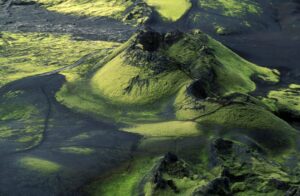There were no casualties from this quake but complicated faulting occurred along a stretch of forty miles.
A major earthquake of magnitude 7.2 occurred in an uninhabited area of western Nevada on December 21, 1932, and thereof caused minimal damage to buildings. Two cabins, one of stone and the other of adobe were destroyed, and ore-treating plants and mines were damaged. The main shock was felt in and around the community of Mina where many chimneys were knocked down, walls fell down, and cracks appeared in the ground.
Extensive and complicated faulting happened over an area forty miles long and four to eight miles wide with numerous rifts developing, each as long as four miles in length and more than three hundred feet in width. Significant vertical and horizontal displacements were common. Boulders were shaken from cliffs, landslides took place, and ground water fluctuated vertically. The earthquake was felt from San Diego to southern Oregon and several aftershocks followed.
An earthquake of almost identical magnitude occurred a few hundred miles northeast of Mina in 1915, and the results on the ground were quite similar to the 1932 one: scarps as long as forty miles and extensive vertical and horizontal displacements happened. There was also a third major quake prior to 1915, within the twentieth century, and again primary rifts and fault scarps were observed along with significant earth movements.
It is of special interest that the horizontal direction of movement of the adjoining mountain masses in the 1932 quake is the same as those observed at Owens Valley along the eastern slopes of the Sierra Nevada Mountains and also the same as on the east side of the San Andreas Fault.
These similarities are reminders of the nature of the underlying geological structures that form the westernmost limits of the North American Tectonic Plate. From Florida to Alaska there are places in the United States that are today found together in one location but geologically they are quite different from one another.
They carry the name terranes. Florida, all of it, may well have come from Africa, and several places east of San Francisco certainly came to that location from elsewhere. For example, the Marin Headlands north of San Francisco was recently identified by its fossils as coming from somewhere on the seabed of the Pacific Ocean. Similar stories describe the history of Alcatraz and Angel islands.
These are but a few of the many terranes found across the nation. Parts of Nevada, which is quite some distance inland, came from Asia. All along the west coast, from Baja, California to Alaska, terranes are everywhere. Two hundred separate ones have been discovered, some large and some quite small, some located as far inland as Utah and Colorado.
Most of these terranes arrived between 100 and 200 million years ago and as a result of their arrival the continent was extended westward by three hundred miles. The sources of these new lands are unknown. Some came from ocean floors, some from islands, and some from other continents. These terranes now provide valuable clues about ancient rock formations that lie underground beneath more recent formations.
Locating the epicenter for the 1932 earthquake was difficult for the geologists who examined the area in depth in 1934. This can readily be appreciated since their work preceded the knowledge of tectonic plates by more than thirty years. When no clear center became obvious from the various reports collected, an area southeast of Reno was selected as the epicenter region.
Years later, with present day technology, the epicenter was located northeast of Reno, a location that is more in keeping with the direction of surface movements that has already been noted. Overall this earthquake was the second most severe ever for Nevada in terms of the available knowledge of that time.





















